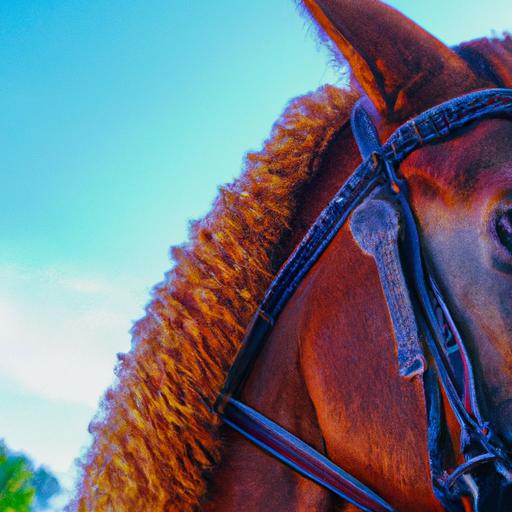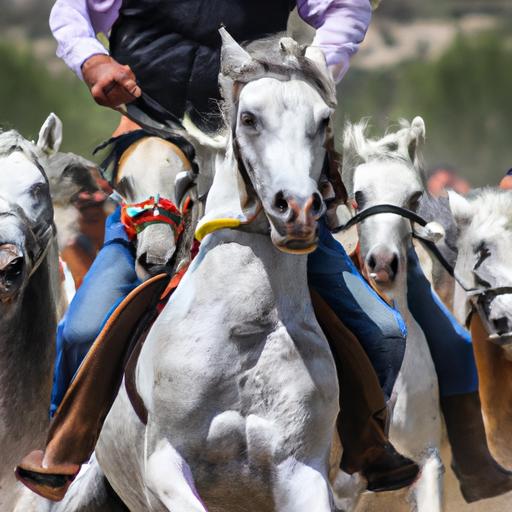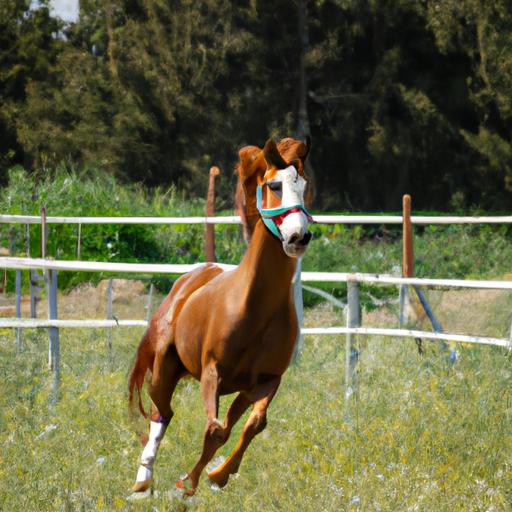Uncover the captivating world of turkish horse breeds, their historical significance, and the thriving horse breeding industry in Turkey.
H1: Turkish Horse Breeds: A Glimpse into Magnificence
Imagine galloping through the lush plains of Turkey, feeling the wind in your hair and the rhythmic hooves beneath you. Turkish horse breeds have captured the hearts of equestrian enthusiasts worldwide, and for good reason. In this article, I invite you to embark on a journey through the captivating world of Turkish horse breeds. We’ll explore their importance in the equine realm, delve into their rich historical significance, and gain insight into the thriving Turkish horse breeding industry.
H2: Importance of Turkish Horse Breeds in the Equine World

Turkish horse breeds hold a special place in the equine world, esteemed for their exceptional qualities and versatility. These majestic creatures have been bred for centuries, honing their agility, endurance, and intelligence. Whether you’re an avid horse rider or a casual admirer, Turkish horse breeds offer a unique experience that sets them apart from the rest.
H2: Historical Significance of Turkish Horse Breeds

Travel back in time with me to an era where empires rose and fell, and the world marveled at the might of Turkish horse breeds. These noble creatures played an integral role in the history of civilizations, serving as trusted companions in wars, royal processions, and even diplomatic exchanges. The influence of Turkish horse breeds reverberated across continents, shaping the development of various equine breeds we know today.
H2: Overview of the Turkish Horse Breeding Industry
Behind every magnificent Turkish horse stands a dedicated community of breeders and enthusiasts. The Turkish horse breeding industry thrives on a passion for preserving the legacy of these exceptional breeds. With meticulous care, selective breeding, and a deep understanding of equine genetics, Turkish breeders continue to uphold the standards of excellence that define these remarkable horses.
As we embark on this exploration of Turkish horse breeds, be prepared to be captivated by their beauty, intrigued by their history, and inspired by the passionate individuals who work tirelessly to ensure their preservation. Join me in unraveling the secrets and splendor of Turkish horse breeds, as we delve deeper into their captivating world.
Stay tuned for the upcoming sections, where we’ll dive into the captivating history and origins of Turkish horse breeds, explore the most popular breeds, and examine the efforts taken to preserve these magnificent creatures.
words.
Turkish Horse Breeds: A Brief Overview
Description of the Various Turkish Horse Breeds
When it comes to Turkish horse breeds, diversity reigns supreme. Turkey boasts a rich tapestry of equine breeds, each possessing its own unique charm and purpose. From the elegant Akhal-Teke to the sturdy Anatolian, the Turkish horse breeds offer a wide range of options for horse enthusiasts.
Key Characteristics and Distinguishing Features of Each Breed
Let’s take a closer look at some of these remarkable Turkish horse breeds:
H3: Akhal-Teke
The Akhal-Teke, often referred to as the “Golden Horse,” is renowned for its lustrous and metallic coat, which gleams like gold in the sunlight. With their slender frames and impressive speed, Akhal-Tekes excel in endurance riding and show jumping, captivating riders and spectators alike.
H3: Anatolian
Hailing from the rugged landscapes of Anatolia, the Anatolian horse breed is characterized by its robust build and unwavering strength. These versatile horses have been historically used for agricultural work, transportation, and even military purposes. Their ability to adapt to various terrains and climates makes them an ideal companion for long journeys.
H3: Karacabey
The Karacabey is a breed that embodies grace and elegance. Originating from the Karacabey district in Turkey, these horses possess a harmonious blend of strength and agility. With their striking appearance and gentle temperament, Karacabey horses are well-suited for dressage and recreational riding, enchanting riders with their fluid movements.
Unique Traits That Make Turkish Horse Breeds Stand Out
What sets Turkish horse breeds apart from others is not just their physical attributes but also their incredible temperament and adaptability. These horses inherit a resilient spirit from their ancestors, enabling them to thrive in challenging environments. Whether it’s their endurance, intelligence, or remarkable beauty, Turkish horse breeds never fail to leave a lasting impression.
As we continue our exploration of Turkish horse breeds, we will delve deeper into their fascinating history and origins. Join me in the upcoming sections, where we will uncover the ancient roots of these majestic creatures and the impact they have had on equine breeds worldwide.
Stay tuned for the next section, where we will unravel the captivating history and origins of Turkish horse breeds.
words.
History and Origins of Turkish Horse Breeds
Ancient Origins of Turkish Horse Breeds
The roots of Turkish horse breeds run deep into the annals of history, tracing back to ancient civilizations that thrived in the lands of Anatolia. These majestic horses have been an integral part of Turkish culture for millennia, with evidence of their existence dating back to as early as the Hittite Empire. The ancient Anatolian people prized these horses for their strength, stamina, and unwavering loyalty, traits that have been passed down through generations.
Influence of Turkish Horse Breeds on Other Equine Breeds Worldwide
The impact of Turkish horse breeds extends far beyond the borders of Anatolia. Over centuries, these magnificent horses have left an indelible mark on equine breeds across the globe. Their exceptional characteristics, such as their agility, resilience, and remarkable endurance, have been sought after and incorporated into the development of various other horse breeds. From the Arabian Peninsula to Central Europe, the influence of Turkish horse breeds can be seen in the bloodlines of countless equine lineages.
Cultural and Historical Significance of Turkish Horse Breeds in Turkey
In Turkey, the bond between Turkish people and their horses is intertwined with the very fabric of the nation’s history and culture. These horses have played pivotal roles in Turkish folklore, literature, and even national celebrations. From the nomadic Turkic tribes to the mighty Ottoman Empire, Turkish horse breeds have symbolized power, prestige, and nobility. They have carried warriors into battle, transported sultans on grand processions, and served as a source of inspiration for countless artistic creations.
As we delve deeper into the history and origins of Turkish horse breeds, we uncover a tapestry woven with tales of valor, cultural heritage, and a deep appreciation for these magnificent creatures. Join me as we continue our exploration, moving forward to discover the most popular Turkish horse breeds and the unique traits that make them stand out.
Stay tuned for the next section, where we will uncover the intriguing world of the most popular Turkish horse breeds, unveiling their captivating characteristics and roles in various equestrian activities.
words.
Popular Turkish Horse Breeds
Turkey is home to a diverse array of horse breeds, each possessing its own unique charm and characteristics. Let’s take a closer look at some of the most popular Turkish horse breeds, their distinctive attributes, and the roles they play in various equestrian activities.
H3: Anatolian
The Anatolian horse breed, also known as the Turkish Arabian, exemplifies elegance and grace. With its refined head, arched neck, and strong hindquarters, this breed is a sight to behold. Known for its speed, agility, and endurance, the Anatolian is highly sought after for long-distance riding and endurance competitions. It effortlessly traverses rugged terrains, making it the perfect companion for adventurous riders.
H3: Akhal-Teke
The Akhal-Teke breed, originating from Turkmenistan but also found in Turkey, showcases a distinctive metallic sheen to its coat, earning it the nickname “golden horse.” Renowned for its remarkable athleticism and stamina, the Akhal-Teke excels in various equestrian disciplines, including dressage, show jumping, and endurance riding. Its slender build, powerful hindquarters, and exceptional speed make it a true standout in the equestrian world.
H3: Turkish Van
The Turkish Van, also known as the Van Kedisi, may not be a horse breed, but its connection to Turkey is worth mentioning. This unique breed of cat, originating from the Van region of Eastern Turkey, is known for its striking white coat and striking heterochromatic eyes, with one eye being blue and the other amber. Often associated with the Turkish Van cat is the Van Kedisi legend, which tells a mesmerizing tale of a cat that swam ashore from a sinking ship, leaving its mark on the breed’s distinctive coat pattern.
H4: Role and Usage in Different Equestrian Activities
Each Turkish horse breed has its own strengths and purpose in various equestrian activities. The Anatolian’s endurance and agility make it ideal for long-distance riding and endurance competitions. The Akhal-Teke’s athletic prowess and speed make it a top performer in disciplines like dressage, show jumping, and endurance riding. While the Turkish Van may not be a horse breed, it holds significance in Turkish folklore and adds to the cultural heritage associated with Turkish animals.
Together, these popular Turkish horse breeds contribute to the vibrant equestrian landscape, captivating riders and enthusiasts alike with their beauty, versatility, and impressive capabilities. Whether you’re seeking a partner for long rides, competitive pursuits, or simply admiring their magnificence, Turkish horse breeds offer an unparalleled experience.
Stay tuned for the upcoming sections, where we’ll explore the preservation and conservation efforts for Turkish horse breeds and delve into the future prospects and opportunities that await these remarkable creatures.
words.
Preservation and Conservation Efforts for Turkish Horse Breeds
Turkish horse breeds possess a heritage that is not only rich in history but also vital to the equine world’s diversity. Preserving these magnificent breeds is of utmost importance to ensure their continued existence for future generations. Let’s delve into the significance of preserving Turkish horse breeds, the commendable efforts undertaken by organizations and individuals, and the challenges faced in the conservation process.
H3: Importance of Preserving Turkish Horse Breeds
Preservation of Turkish horse breeds is crucial for several reasons. Firstly, these breeds embody a living testament to the cultural and historical heritage of Turkey. They hold immense value as a symbol of national pride, representing the connection between humans and animals that has endured for centuries. Secondly, Turkish horse breeds possess unique genetic traits and characteristics that contribute to the overall biodiversity of the equine world. Preserving these breeds ensures the preservation of genetic diversity, which is essential for the long-term health and adaptability of the equine population.
H3: Efforts Undertaken for Protection and Conservation
Numerous organizations and passionate individuals have dedicated themselves to protecting and conserving Turkish horse breeds. These efforts range from establishing breeding programs to promoting awareness and education about these breeds. Organizations such as the Turkish Horse Breeders’ Association and the Turkish Equestrian Federation play a pivotal role in coordinating conservation efforts, supporting breeders, and advocating for the preservation of Turkish horse breeds. Additionally, dedicated breeders work tirelessly to maintain breed standards, conduct genetic research, and ensure the responsible breeding and care of these magnificent horses.
H3: Challenges Faced and Possible Solutions
Preserving Turkish horse breeds is not without its challenges. Urbanization, changes in land use, and shifting societal preferences pose threats to the habitats and populations of these horses. Additionally, limited financial resources, lack of public awareness, and the need for improved collaboration among stakeholders are challenges that must be overcome. To address these challenges, comprehensive conservation plans should be developed, focusing on habitat protection, sustainable breeding practices, and educational initiatives. Strengthening collaborations between breeders, researchers, and policymakers is crucial in implementing effective strategies for the preservation of Turkish horse breeds.
By acknowledging the importance of preserving Turkish horse breeds, supporting conservation efforts, and raising awareness, we can secure a future where these magnificent creatures continue to grace our lives and remind us of the enduring bond between humans and horses.
Stay tuned for the upcoming section, where we’ll explore the future prospects and opportunities for Turkish horse breeds.


